Chasing the Kali Gandaki River upstream on the western edge of the Annapurna massif, we cross paths with a group of white-robed Indian sadhus, unburdened by backpacks, carrying tridents and little else. These silent, bare-footed pilgrims sit with us a while – sharing sweets and smiling at our sizable loads – before Muktinath beckons us all on.
As the Himalaya’s most sacred religious site, Muktinath lures an incongruous crowd. Dwarfed by eroded rock plateaus and snow-dusted, 8,000 metre peaks, the trail to Muktinath takes Buddhists, Hindus and Annapurna trekkers far into the highlands that buffer Tibet.
Beneath it all, the medieval village of Kagbeni peers into the restricted wild lands of Upper Mustang – its labyrinth of sunny cobblestone alleys, whitewashed Buddhist chortens and 100-year-old, rammed-earth homes making way for trekking lodges.



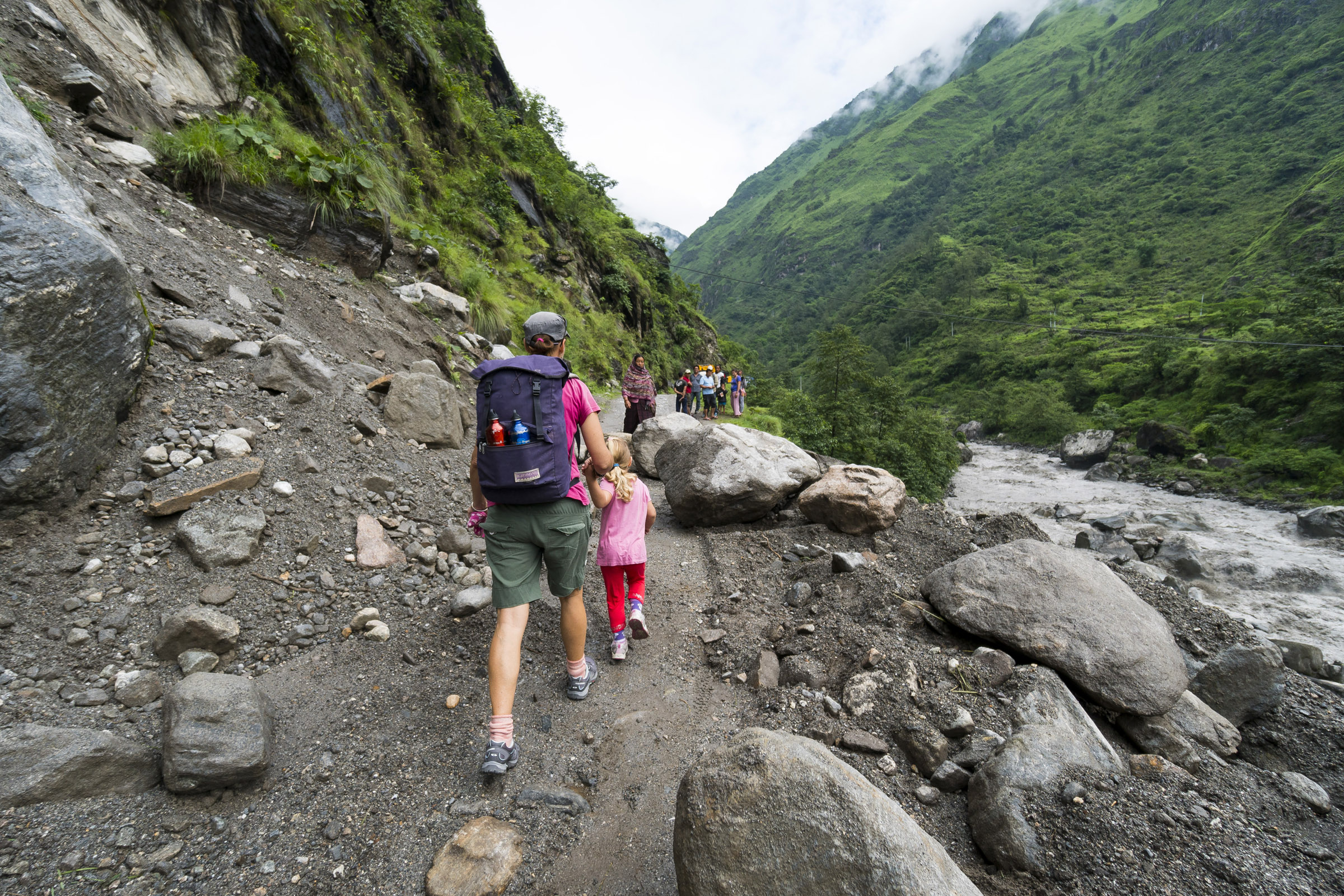
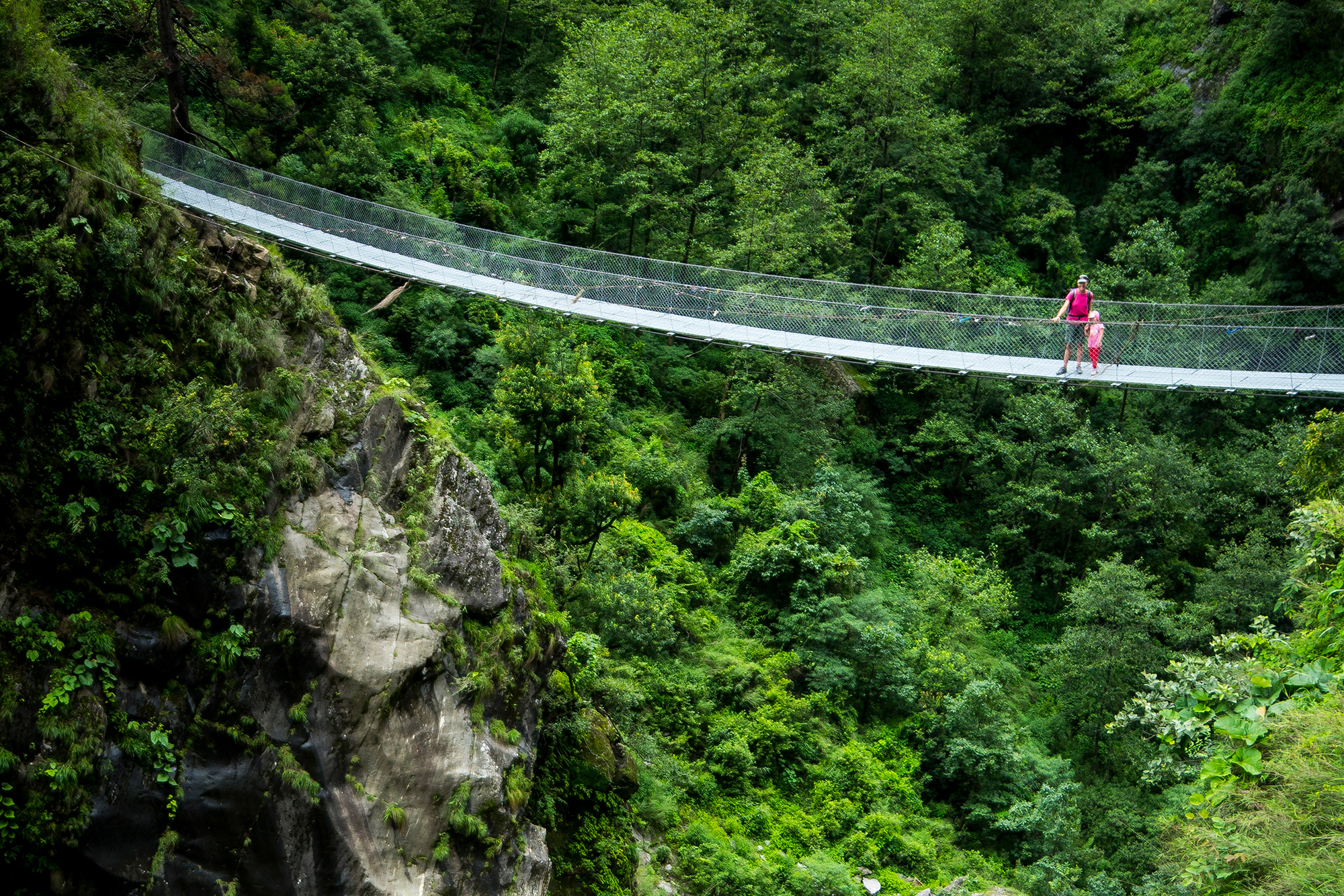
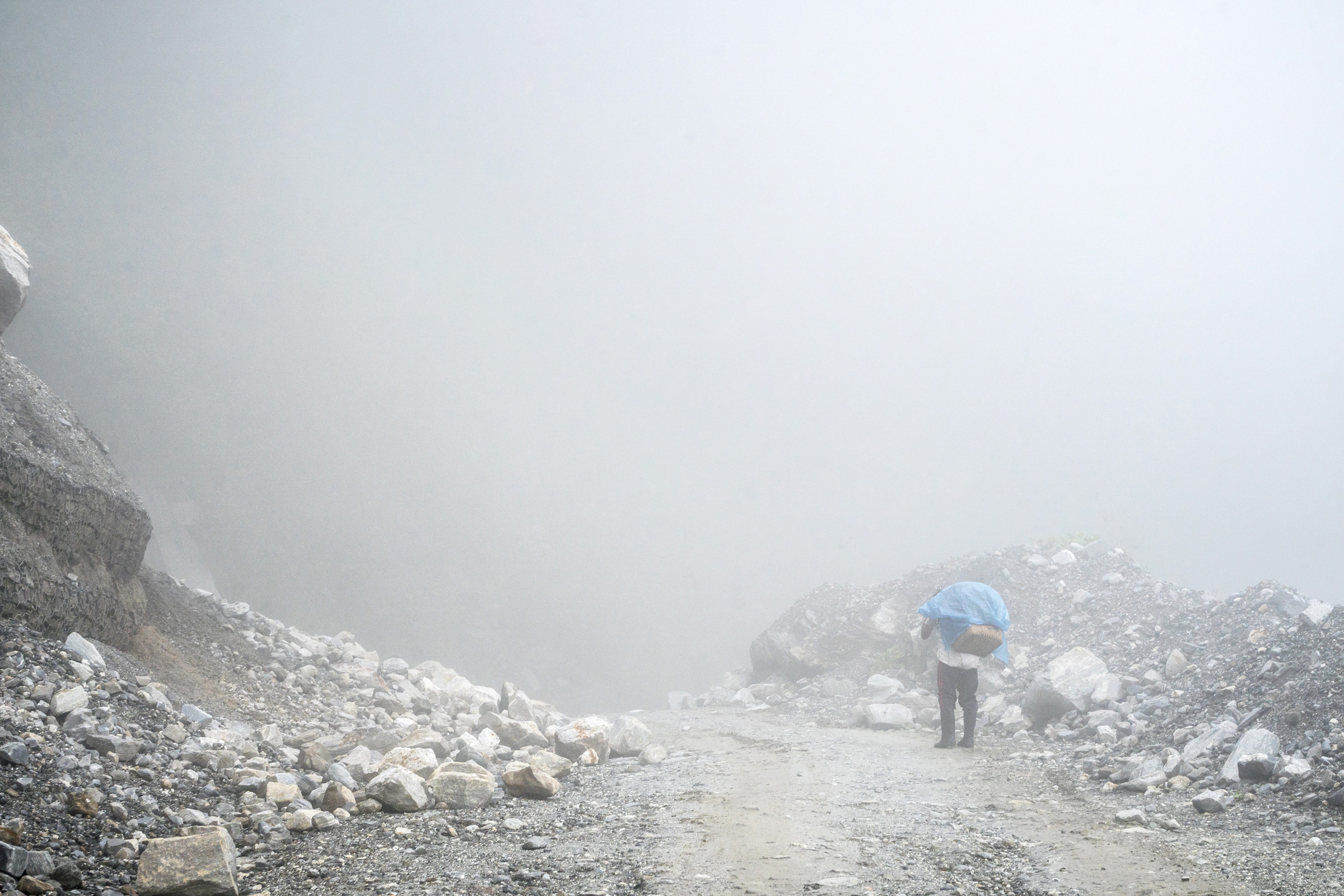
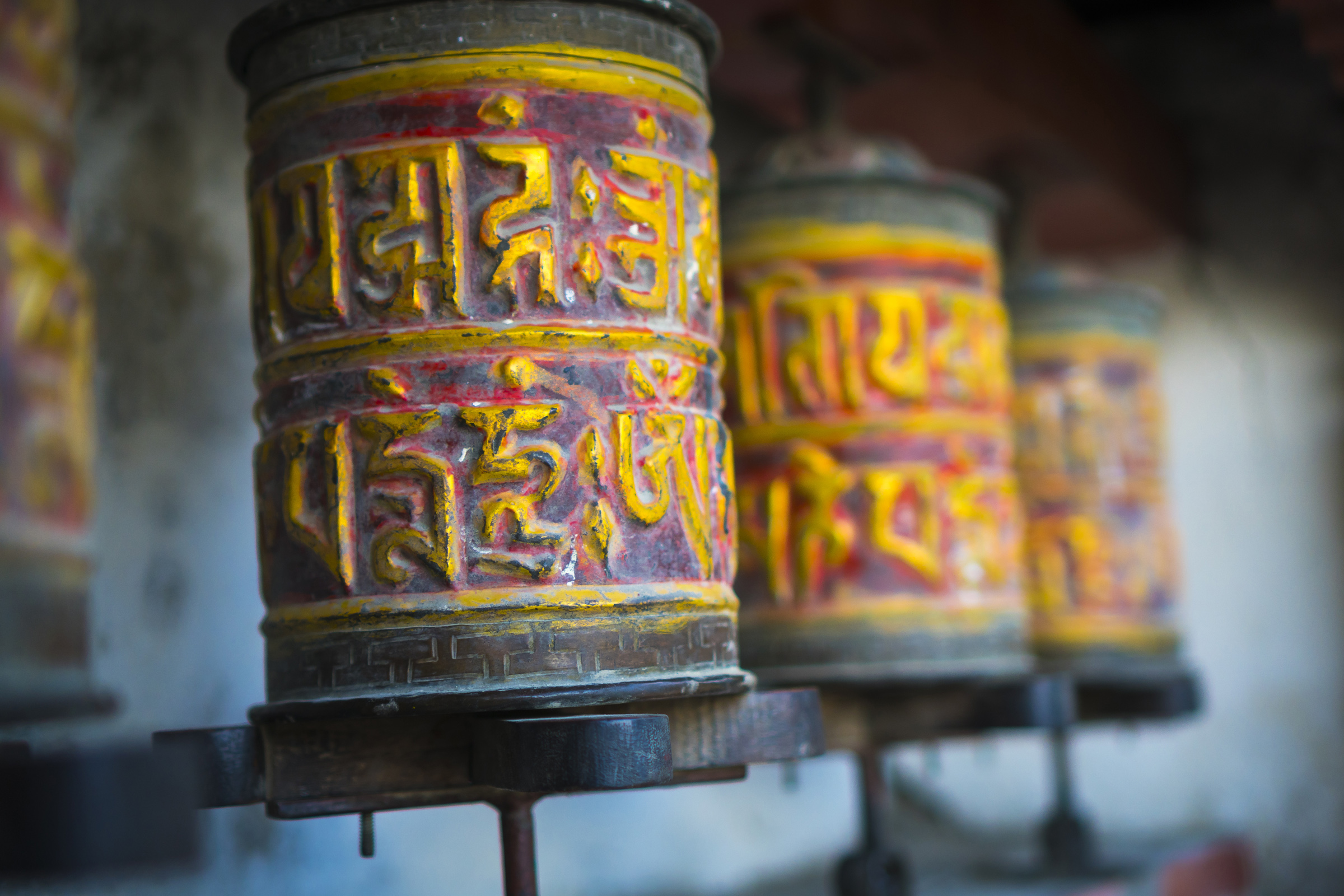
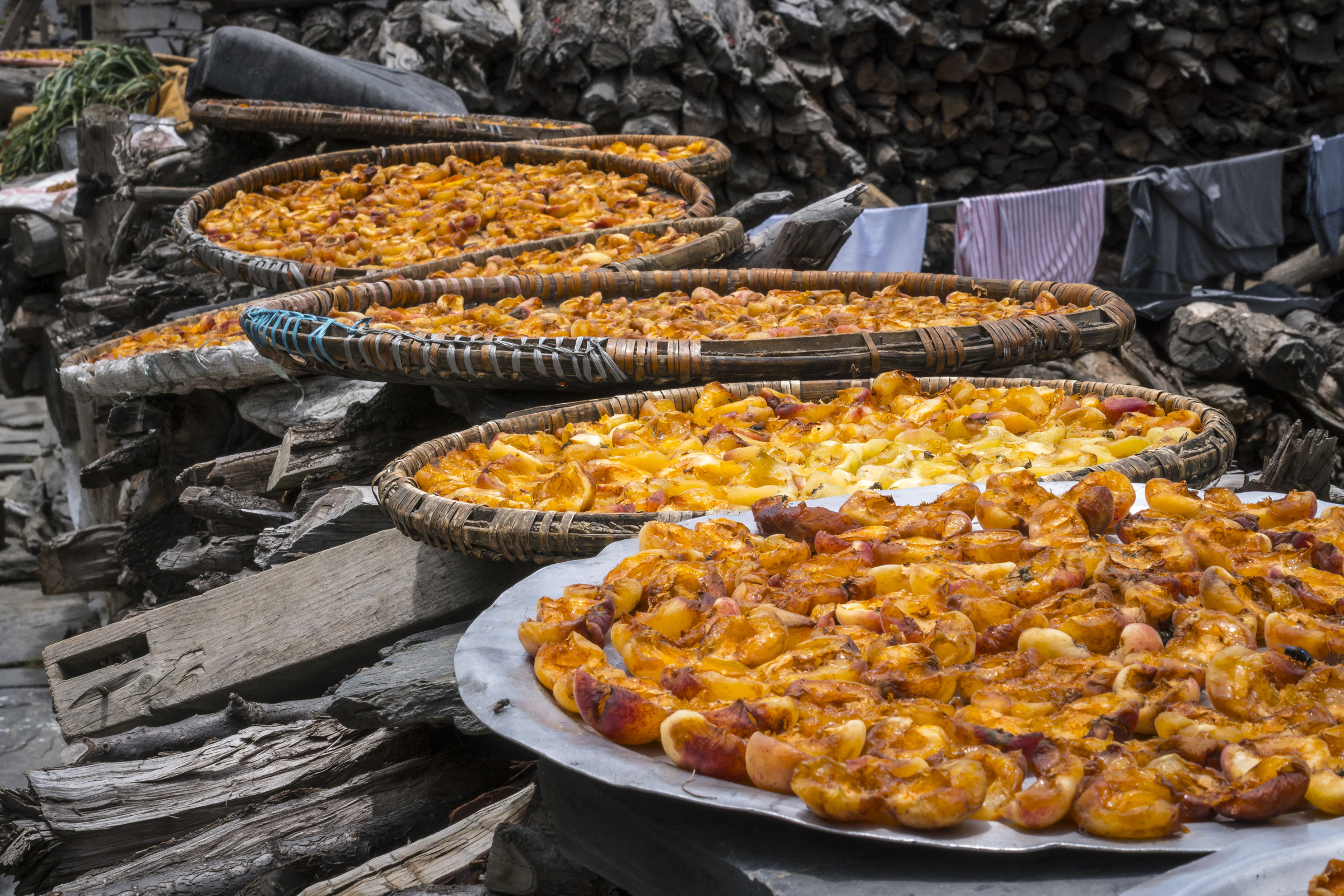
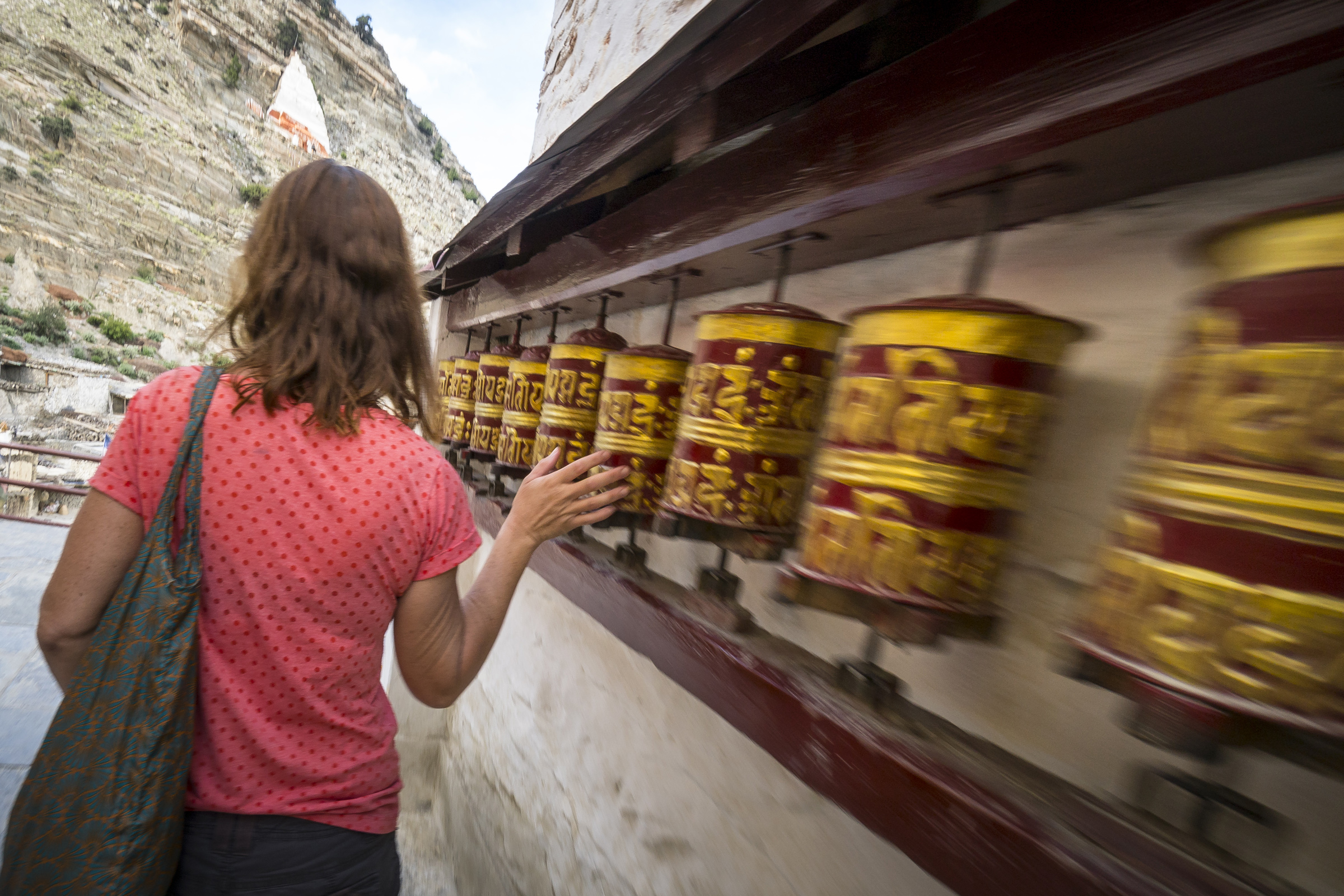
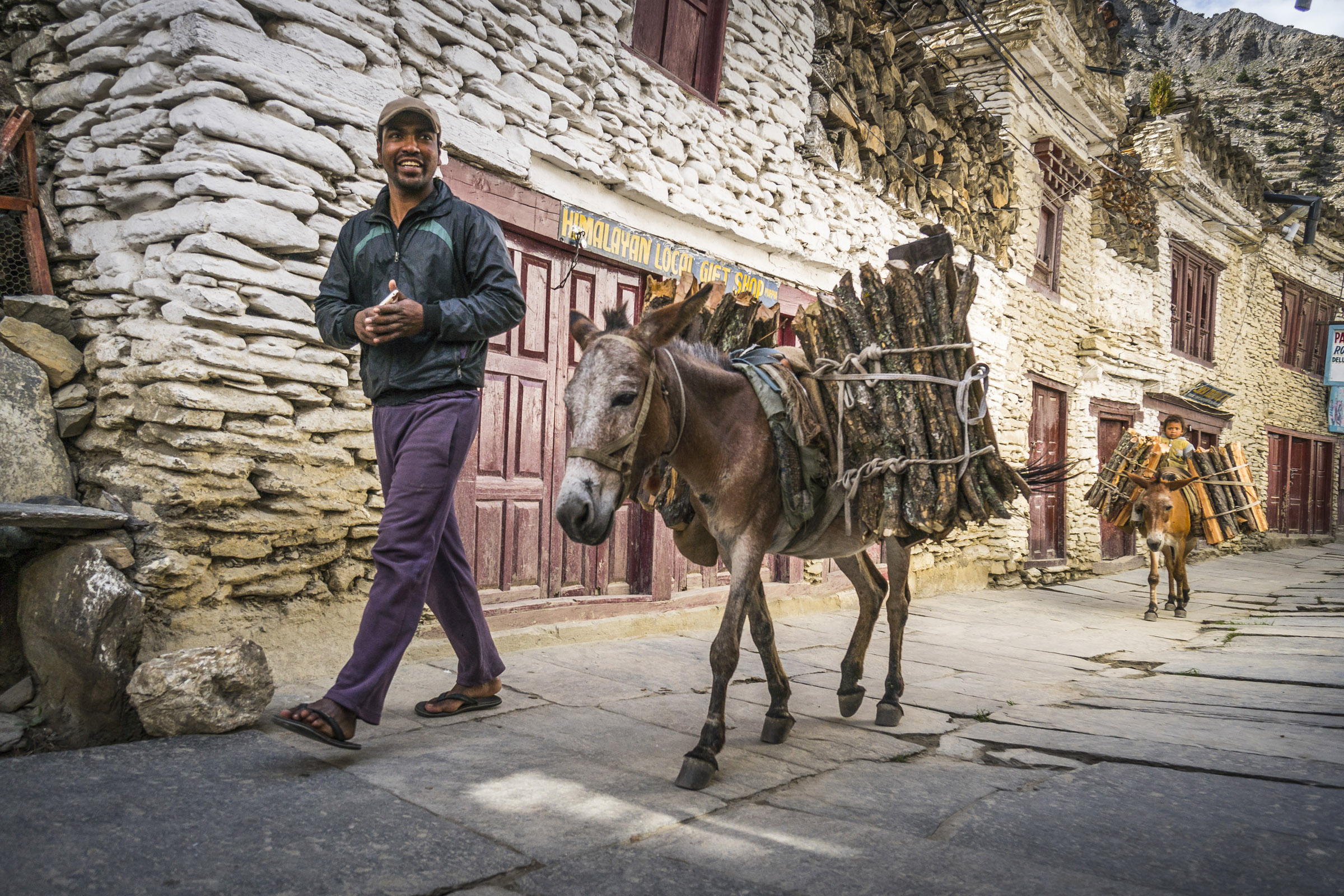
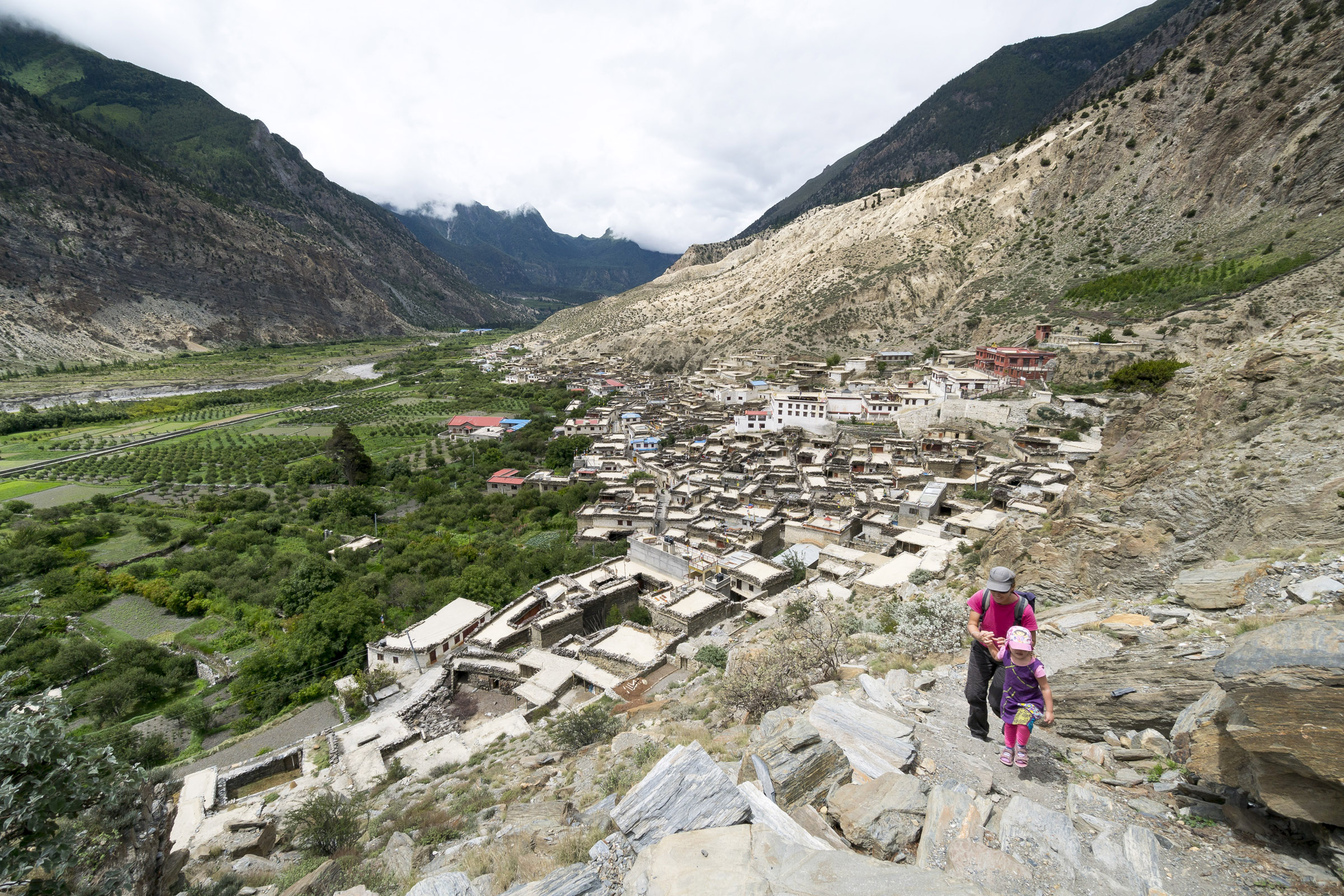
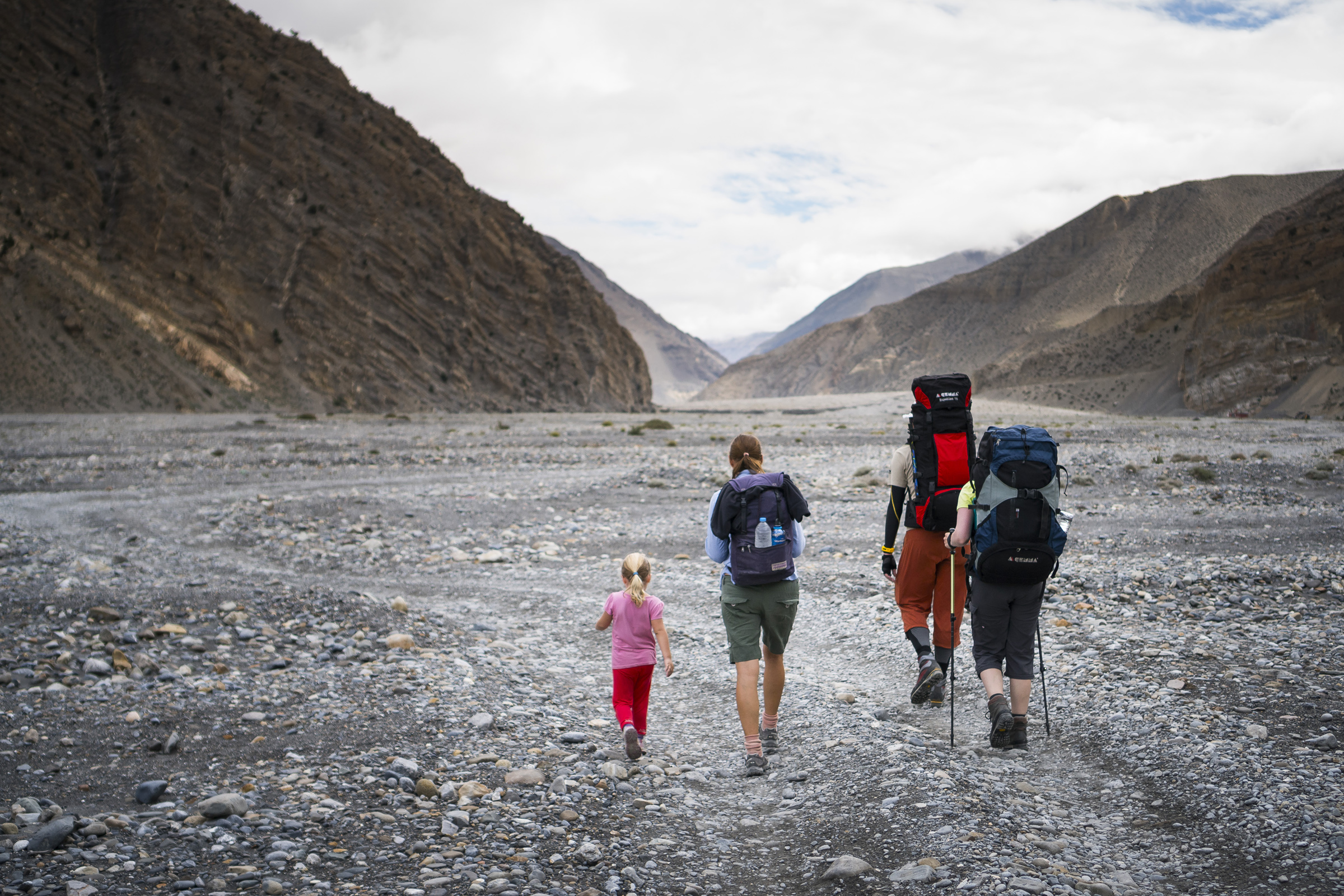
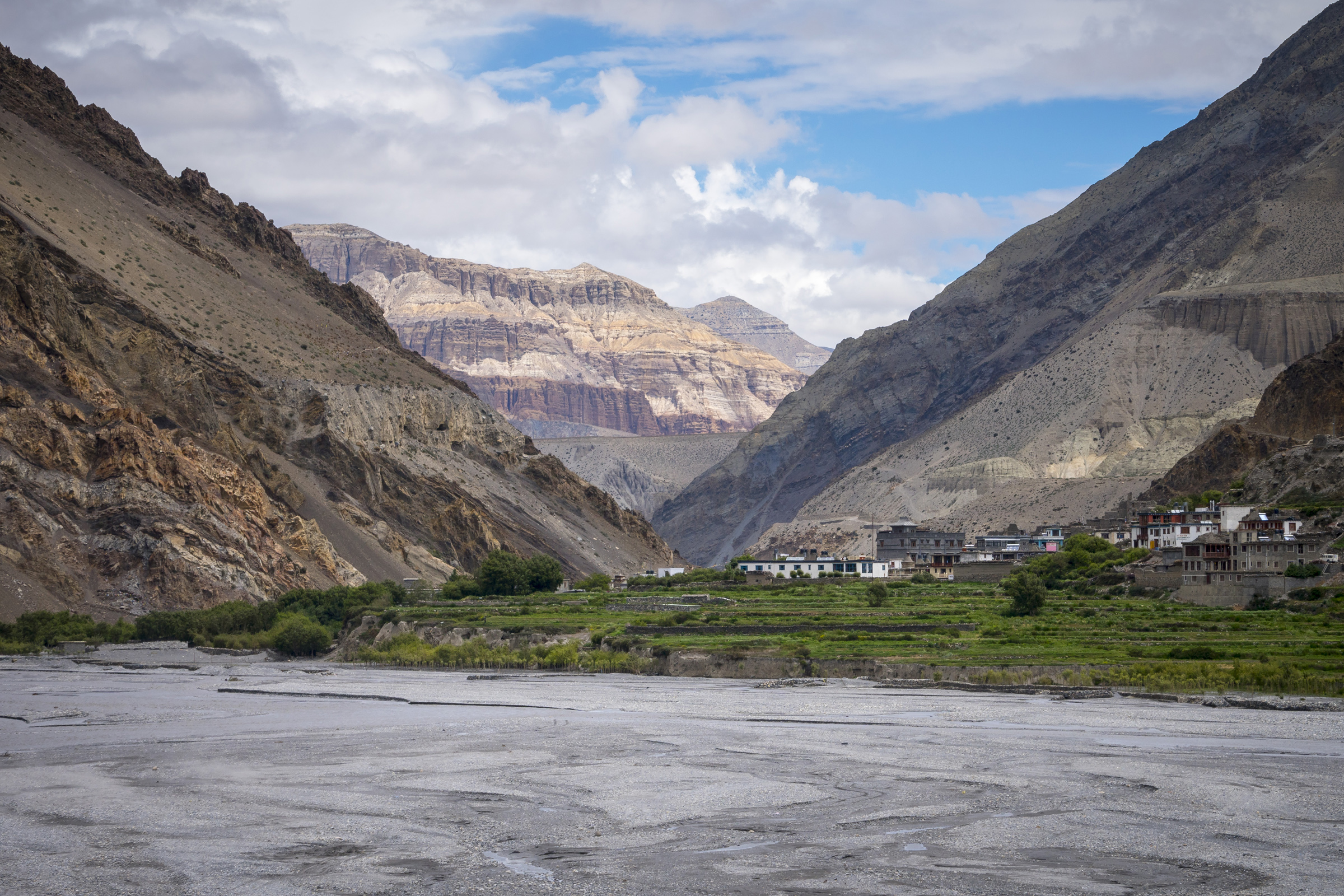
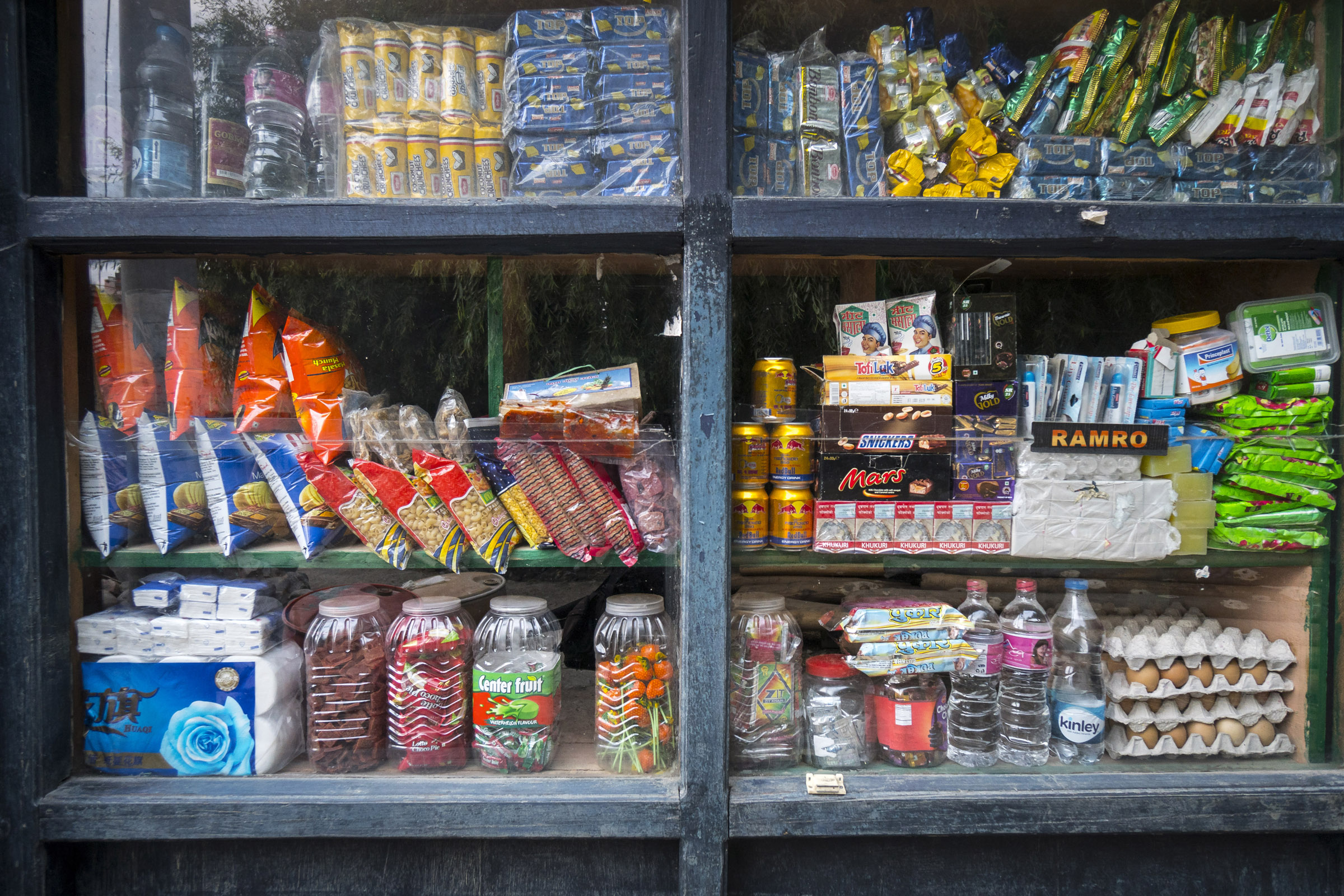
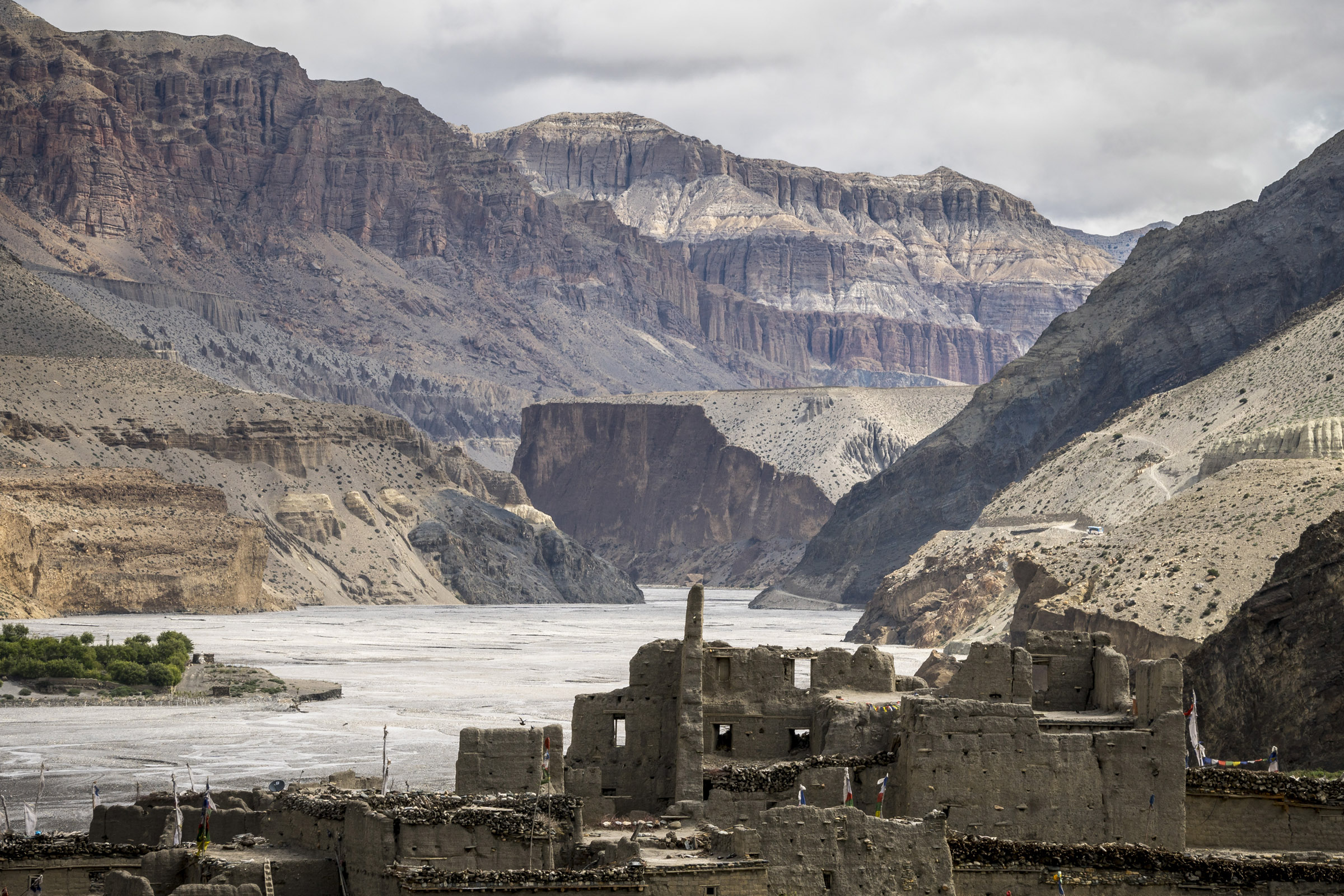

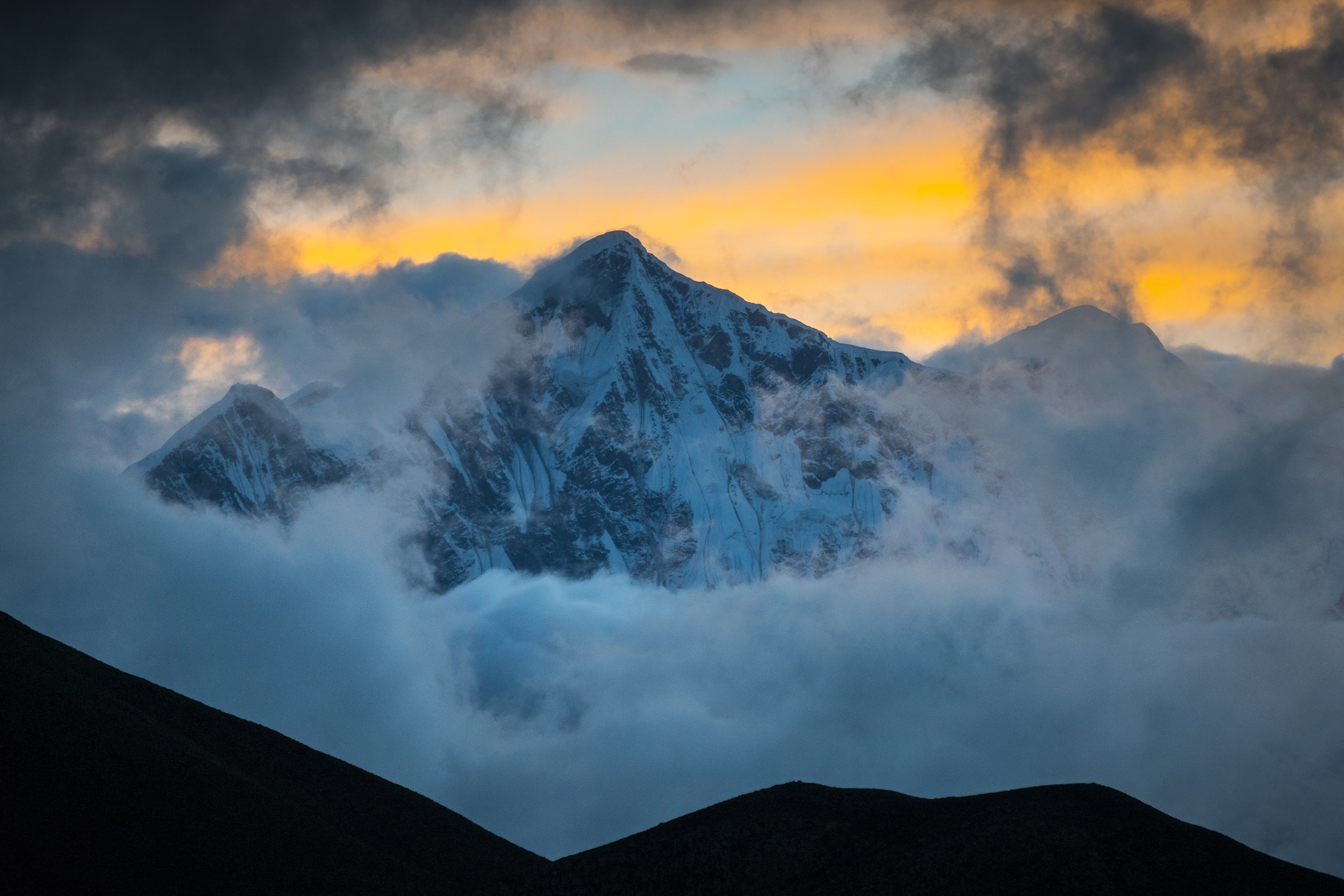
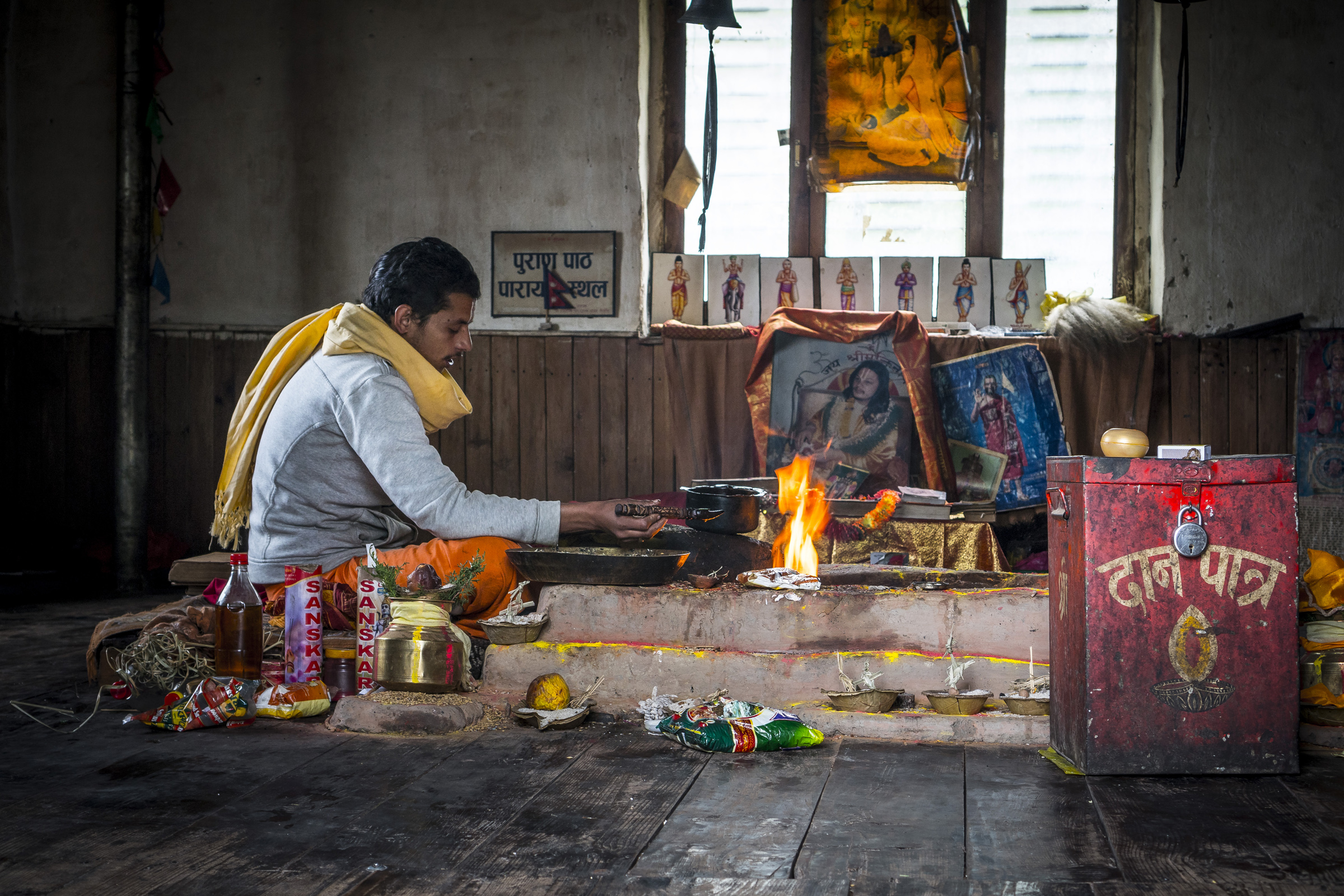
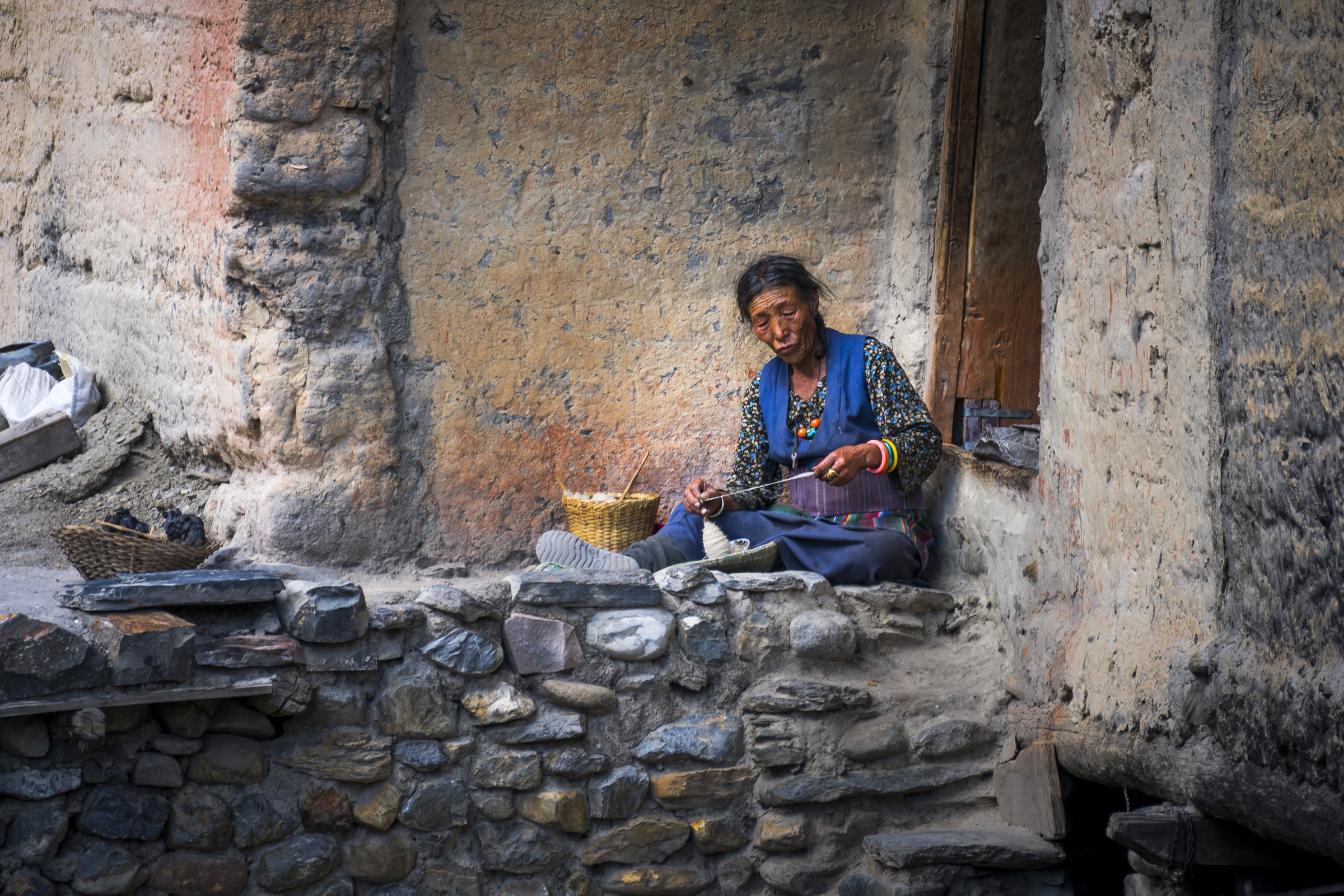
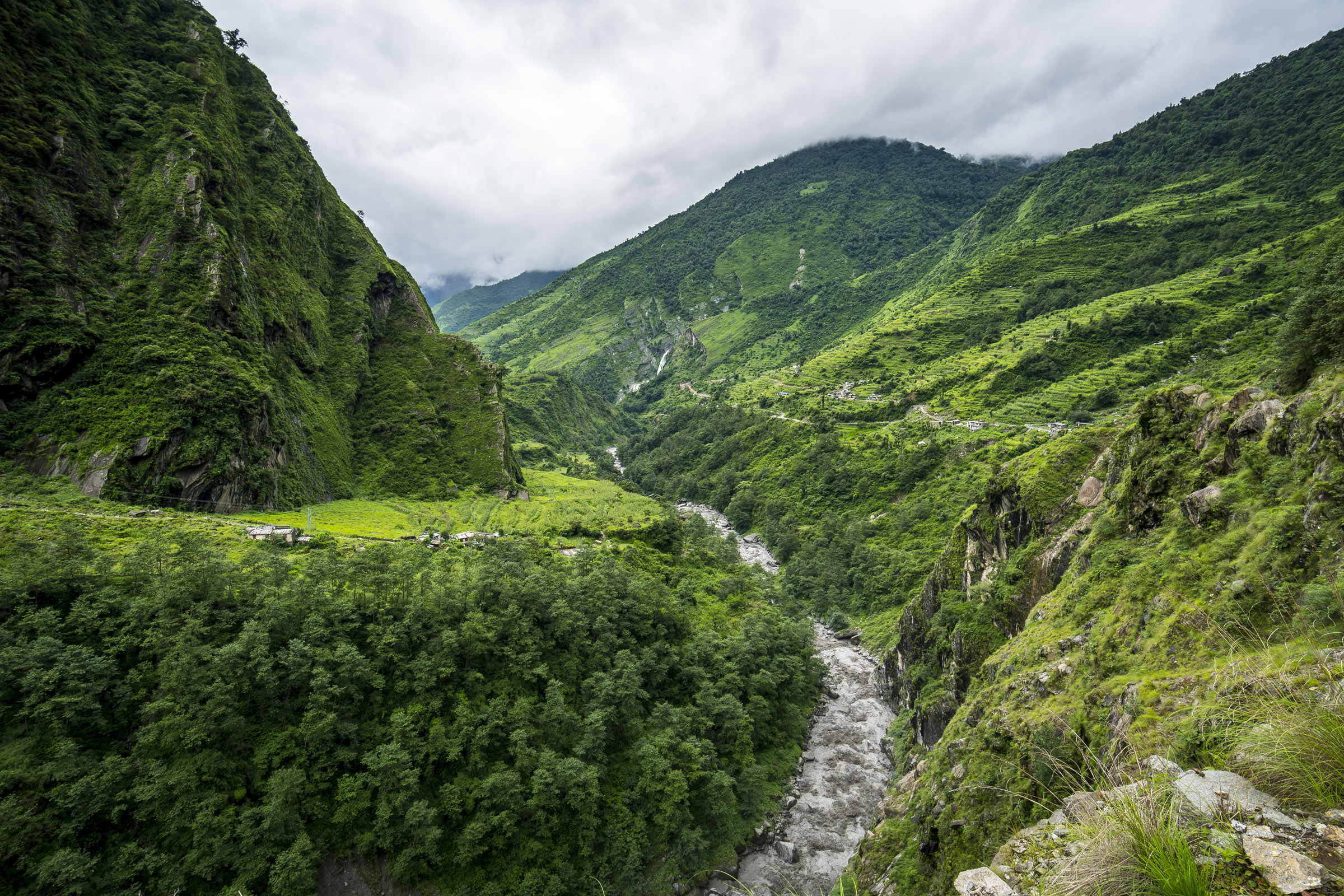
It’s exactly the kind of faraway destination that inspires grand Himalayan treks. But Annapurna Circuit trekkers who reach this unearthly moonscape from the east after long, rugged weeks at altitude, tend not to hang around. Instead, they rush downriver to complete their lap back to Pokhara.
Permit-free and unrestricted, we trek against the flow from Pokhara to Muktinath and back again, negotiating monsoon season landslides and thundering waterfalls, and detouring often.
Mesmerising mountain views lure us on, Acute Mountain Sickness (AMS) stops us in our tracks and in all we spend 19 life-changing days discovering a Himalayan wilderness that’s in a class of its own. But like all great Nepali adventures, it begins with a scary ride.
HELL ON WHEELS
The road to Jomsom is a rugged affair during the monsoon: undercut and washed out and plagued by landslides. But when a Jomsom-bound plane hits the mountains, road travel suddenly looks far less perilous.
We jump aboard a bus out of Beni that lurches precariously over the rushing river far below. We’re wedged into a seething mass of bodies and boxes and debate at what point we should debunk this madness and start walking. In the end, the road decides. With the bus firmly bogged outside Tatopani, we happily abandon our ride and begin our long trek to Muktinath.
Day one ends in Dana, a pretty guesthouse strip on the edge of the Kali Gandaki River where buffalo forage in endless, sunny fields of marijuana. We laze on hot rocks, watching to see just how happy the buffalo become, and feast afterwards on big plates of dhal bhat – Nepal’s legendary vegetable curry served with soupy lentils, rice and fiery pickles.
While we sleep, a thunderstorm triggers a massive landslide that severs the road, stalling jeeps and buses, and plunging the valley into an odd silence. We climb on without fuss, scaling fallen boulders and trees as a digger scrapes away at the debris.
Upriver lies what Nepali people swear is the deepest gorge in the world. It’s dwarfed by soaring, snowy peaks and the Rupse Chhahara – the Beautiful Waterfall – which plummets 300 metres. We step tentatively onto the gorge’s suspension bridge, straddling slender wooden planks strung together with steel cable, and peer beneath our feet at the raging Kali Gandaki River far below. The bridge swings and sways. Every precarious step brings on shivers and smiles.
We throw on our rain jackets and picnic on yak’s cheese in the Rupse Chhahara’s cascading mist, then wander on to Ghasa and Kalopani where Tibetan Buddhist villages colour the landscape. Giggly school kids appear, taking my daughter’s hands and filling them with freshly picked snapdragons.
We duck out of the rain for tea at See You Lodge. Soon, tasty cheese pizza arrives, piping-hot, along with big mugs of apple cider that our host serves with a knowing smile. Outside, swirling clouds tease us with fleeting black and white glimpses of Nilgiri’s 6,000 metre-plus peaks. Seduced by the deluxe rooms with fluffy doonas, gas heated showers and a ridiculous $2.50 a night price tag, we decide to stay.
TIBETAN DISCOVERIES
We set out to Tukuche with our rain jackets on, climbing through a rain valley that the locals warn will guarantee a sodden day of wet boots and gushing rivers. The skies don’t brighten again until we reach Chhairo’s Tibetan refugee camp the next day. Here, we wander through orchards of tiny, sour apples and fragrant pine forests, where we cheer on local archers and discover the 300-year-old Chhairo Gompa.
Ravenous, we follow our noses to a sunny courtyard restaurant where locals cover our table with an embarrassing feast of omelettes, chapattis, pancakes and marsala tea, and fill our daughter’s hands with sweet, ripe apricots. We sit and chat and order more tea, meet locals all over the village and only drag our heels upriver to Marpha when the time comes to bed down for the night.
Marpha is no disappointment. Equally famous for its ancient stone alleyways and its heady apple brandy, we tackle both, climbing to the top of the Samtenling Gompa to watch villagers and ponies at work, and settling down at dusk with bottles of sweet apple juice, cider and brandy that coax us all into exhausted sleep.
At first light the Annapurna Circuit beckons us, but we don’t take the bait. Instead, we take a local’s advice and trek high above Marpha, following big winding switchbacks for sharpening views of snowy peaks and stark white chortens. We finally top out at Old Marpha, a town abandoned by locals when the road to Jomsom lured them down the river. But what they left behind is utterly remarkable.
We poke our heads into old rammed earth and timber huts, and higher up, spot a huge, red clay jar in the side of a roadside cliff, shattered to reveal its cargo of human bones. As we look around more closely, we discover a jumble of human skulls and bones and clay jar fragments on the road’s scree slopes – we’ve stumbled upon an old burial site. Crowned by a flat-topped chorten and other, more recent burial plots, we explore the site with the reverence of outsiders and leave mesmerised.
KAGBENI BOUND
Over the next day and a half to Kagbeni, the discoveries continue. We climb above the tree line into a veritable moonscape around Syang and learn, from the local family who calls us in for breakfast chapattis, how to make brandy from the mould of juniper branches. On the wide, braided riverbed north of Jomsom we unearth rare ammonoid fossils and leapfrog clumps of miniature yellow daises that bloom miraculously out of rock.
The trekking is effortless and fun, and a trio of tiny ponies keeps us company until Kagbeni finally looms. This lush, riverside haven peers into the restricted region of Upper Mustang, and is surrounded by verdant fields of potatoes and apple trees. In this lively village, trekker lodges line up alongside ancient whitewashed chortens, and locals usher cows and goats into what might be heritage-listed stalls in another part of the world.
We have Kagbeni’s beautiful cobblestone backstreets almost to ourselves, and, with trekkers so scarce in the monsoon low-season, shopkeepers are relaxed and up for a chat. We buy up chocolate and yak cheese and, from our riverside room, watch Nilgiri (7,060m) and Dhaulagiri (8,167m) playing hide-and-seek in the monsoon mist.
HIGH DRAMA
A day’s trek above Kagbeni, our daughter Maya reaches Ranipauwa village giggly and hungry. She eats and sleeps and ticks all the boxes of perfect acclimatisation, but the next day things go horribly wrong.
A gentle 100 metre climb to explore Muktinath’s stunning, gilded temples proves all too much and after a full morning at 3,710 metres, that same chirpy child turns suddenly and uncharacteristically tired, teary and ill.
Recognising the symptoms of AMS, we beat a hasty retreat to our hotel, grab our backpacks and hurry downhill. The parental angst ends – just 15 minutes later – when Maya slides out of my arms to run towards a grazing pony. She’s giggling again and cracking jokes and running ahead of us in a stunning recovery that has our heads reeling.
The crisis over, we push on down the valley, piggybacking Maya to Kagbeni where we flop exhausted onto the bed. She jumps around, trying to tug us outside to play. We call a rest day and play with Maya, walking to the very edge of Upper Mustang where, if armed with a costly restricted area permit and in the company of a tour group, we could find ourselves gazing into Tibet.
Instead, we set our sights on Poon Hill’s more famous Annapurna vista, eight days’ walk away. From Dana, we chase Maya up the Khopra Ridge, gaining over 2,000 metres in three days to wake in Ghorepani to clear skies. We promptly high-tail it to Poon Hill’s lofty 3,210-metre lookout, catching that famous sweeping Annapurna massif in clear, close view – in what is quite literally a high point of the trip.
Stepping off the mountain, we amble back to Pokhara on the home run, treading 1,000 rainy, knee-cracking steps past waterfalls and swimming holes, swinging through bamboo forest and nibbling delicious samosas and apples en route. We devour the best dhal baht in all of Nepal, simmered with fresh herbs and vegetables gathered straight from a hillside garden and served with a zesty mint and chilli pickle that, long into the future, I will still rave about.
This wonderful trek ends as all good adventures do: with a taxi ride back to civilisation and that empty feeling that even a hot shower, clean clothes and an endless menu of much-craved food and drinks can’t seem to fill.
Over beers on our first night back in Pokhara, we download photos and reminisce, wishing ourselves back onto the trail to relive any of those 19 precious, adventurous days.
We immediately want to return. Nepal is like that.
MAKE IT YOURS
Getting there
Air Asia flies to Kathmandu via Kuala Lumpur from Sydney, Melbourne, Gold Coast and Perth (airasia.com). 30-day visas are available on arrival (US$40 and free for kids under 10 years). Bus or fly to Pokhara and continue to Beni by bus (4 hours).
When to go
Join the crowds from October to December or March to May, or tackle a monsoon trek.
Monsoon trekking
Located in a rain shadow, Lower Mustang (Marpha to Muktinath) receives comparatively little monsoon rain, making June to August a top time to trek. With warm weather you can travel light but don’t forget rain gear, a folding umbrella (for when it’s too hot for rain gear), plus DEET-infused insect repellent to ward off leeches.
Permits
Arrange your Annapurna Conservation Area entry permit and TIMS card (Trekkers’ Information Management Systems Card) in Kathmandu or Pokhara (about $25 each, free for kids under 10).
Teahouse trekking
Private rooms and hot showers are common on this trek, priced from $15-20 a night.
Cash up
Withdraw cash in Kathmandu or Pokhara. On the trail, only Jomsom has a pair of ATMs (visa cash advances only).
Water
Bring a USB-rechargeable water filter or use the water refilling stations at Marpha, Jomsom and Muktinath (around 50 cents per litre).





